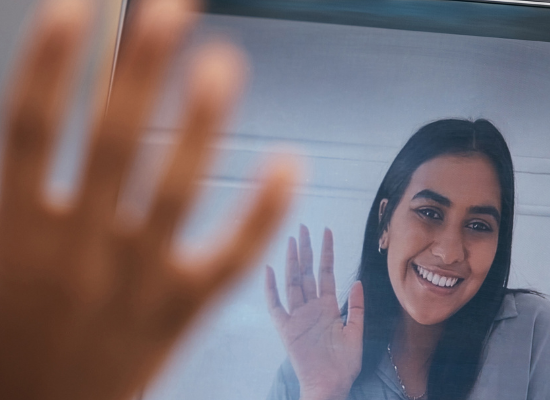
Stephanie Hepburn is a writer in New Orleans. She is the editor in chief of #CrisisTalk. You can reach her at .
“Partnerships don’t come out of the blue; they’re built over time,” said Lindsay Stone, senior director of C & Y Mental Health Programming at the McNabb Center in Tennessee, adding that collaborative partnerships have allowed the center to serve children and families from 24 East Tennessee counties.
In 2017, East Tennessee Children’s Hospital shared with the center that they’d been having a surge of children in a behavioral health crisis. “They told us, ‘That’s not our expertise, we’re a medical hospital.’” Simultaneously, acuity was mounting in outpatient centers, and many of the mobile crisis unit’s assessments were taking place in the emergency department of the children’s hospital.
The reason often involved an at-risk student and the end of the school day. “Maybe the counselor finds out or a peer tells a teacher or administrator, ‘So and so told me they’re thinking about ending their life.’” When that happens, the school will do a risk assessment and, if needed, contact mobile crisis. All the while, the school day is ticking by, and suddenly it’s 3 pm.
“At that point, the mobile crisis team would say, “If they’re not safe to stay there, or it’s not an option for them to stay at school and for us to come over there, go ahead and go to your local emergency department and we’ll meet you there.”
Stone said mobile crisis staff couldn’t just head to the hospital to do an assessment; they had to be invited by emergency department staff. The hospital’s CEO looked at boarding times — how long a person waits for care — and realized children and adolescents were boarding because they were waiting on an inpatient behavioral health placement.
“At that point, they’re just in the ED waiting because they needed a higher level of care and couldn’t go home.”
Emergency room staff wanted the McNabb Center’s help, and the center wanted to help, but there were barriers in the way. To improve access, the center began doing curbside consultations, pulling some of its psychiatrists to do office hours for the hospital. When it had behavioral health patients awaiting higher-level placement, hospital providers consulted the psychiatrists on medications and recommendations. Medication adjustments could stabilize children and adolescents and, with a safety plan in place, divert them from hospitalization altogether. “In other cases, the psychiatrist would discuss medication management while the patient waited for placement.”
What started as office hours became having psychiatrists in the emergency department. “We’d seen the benefit of curbside consultations and providers were comfortable with us.” Not only did stabilizations and diversions increase, but even those whose level of care didn’t change were in a better place because they weren’t just in a holding pattern before going to inpatient hospitalization. It also fostered improved continuity and quality of care.
“We could access records and not have to start from scratch.”
Funding from a Trinity Health Foundation grant allowed East Tennessee Children’s Hospital and the McNabb Center to embed psychiatrists in the emergency department. “We took the same psychiatrists who were doing consultations over the phone and put them on the floor every afternoon.” The psychiatrists provide in-person consultations and add documentation to the child’s hospital electronic medical record. “Our goal is to divert and do earlier medication management to reach a stabilization point sooner.”
The grant also includes telehealth assessments with Children’s Hospital pediatricians — the hospital has 14 outpatient primary care offices across East Tennessee. “They often felt ill-equipped to deal with child and adolescent behavioral health,” Stone pointed out. Her therapists carve out eight telehealth assessment times a week with the primary care offices. They have a shared schedule and the primary care offices select which patients to add. The therapist, pediatrician, child, and parent meet through telehealth. “We do the same paperwork and assessment as if they’d walked through our door seeking behavioral health services.”
Stone and her colleagues also developed a feedback loop, creating clinical summary documents within 48 hours that included presentations, recommendations and follow-up appointments with McNabb or an external provider. “If we set them up for medication services, we send them their initial medication evaluation with prescribed medications and recommendations, further improving coordination.”
Another piece to the partnership with primary care physicians is a monthly consultation to teach the doctors best practices, treating common diagnoses seen by pediatricians — ADHD, depression and anxiety — and talking through challenging cases. Sometimes, it’s mostly discussion, while other times, it’s presentations or working through a complex case like a 12-year-old who is having auditory hallucinations and trauma psychosis.
Thanks to a SAMHSA grant and funding from the Tennessee Department of Mental Health and Substance Use Services, McNabb has also been able to expand children’s crisis continuum further, developing a family walk-in center and a children’s crisis stabilization unit at Children’s Hospital. “We’ve been able to create comprehensive care to address children’s needs at multiple levels.”
The stand-alone family walk-in center doesn’t require health insurance, eliminating a significant barrier to care. “This was important to us because mental health doesn’t discriminate and we wanted anyone to walk in and get care,” said Stone. The center is physically open every day from 8:00 am to 8:00 pm with 24-hour on-call support. The center also partnered with Children’s Hospital to create a workflow for when a child or adolescent experiencing behavioral health distress is in the emergency room and can be sent to the walk-in center. “If they do a suicide assessment and social workers identify that they’re a good walk-in client, they’ll divert them.” The social worker will then call the walk-in center to inform them the child is on the way.
“We are trying to make sure families have options other than the ED — you can come over here and we have experts who can address the behavioral health issue and not have to deal with the high cost.”
If the youth doesn’t arrive within 24 hours, the center will contact the hospital to resume care. “We keep the conversation open so that if the social workers can get a hold of the family, they can reaffirm the need to establish services.” The aim, said Stone, is to have constant dialogue between the partners to ensure they’re all on the same page and that children and adolescents don’t fall through the cracks.
The walk-in center does assessments and evaluations, outpatient therapy, comprehensive child and family treatment case management, and medication services, working with families for up to six to eight weeks.
Stone, who has been at McNabb for 19 years and oversees 16 programs, said it’s hard to imagine how families managed before the family walk-in center. “It’s one of those programs that’s been so highly utilized — rarely does a day go by that I don’t give it as an option to a family or referral source.”
In the original funding proposal, data came from the five counties the center is responsible for serving. Because the hospital serves around 16 counties, Stone and her colleagues figured the walk-in center would serve those same counties. But, as of November, the center’s reach has been vast, serving 24 counties, with families traveling across the state to take their children to the center.
“People are driving hours to see us because there’s no other option in their county.”
Since opening, the walk-in center has served 1,819 patients and stabilized 87 percent. Referrals primarily come from schools (26 percent), McNabb’s mobile crisis unit (24 percent) and Children’s Hospital (19 percent).
In developing the crisis stabilization unit, Stone and her colleagues contacted Children’s Hospital to see if they’d be interested in partnering. At the time, one of the wings on the hospital’s fourth floor was unoccupied. “We asked if that would meet a need for both of us — that’s always a critical pitching point — and thankfully, they were on board even before we received notification of the SAMHSA award.”
Today, McNabb leases the once-empty wing. Stone said most of the preparation time was spent building the unit from scratch, memorandums of understanding that must be in place when embedding within a hospital and hiring staff. They also had to develop a transparent workflow and communication for diverting people walking into the hospital trying to get to the unit.
“There were also just the logistics of being held to different confidentiality and HIPAA standards in a hospital.”
How long kids stay on the unit ranges from 72 hours to up to 10 days, with an average of 5 days. “The traditional approach is 72 hours but we have a waiver through our state licensure to allow up to 10 days.” All patients are voluntary.
Through October, the children’s crisis stabilization unit has served 574 children. Patients are self-referral (32 percent) or referred from Children’s Hospital (28 percent) or McNabb’s mobile crisis unit (26 percent).
Early on, Stone asked funders what outcomes and data they wanted to be tracked. “We built metrics and data around what they would want to see to justify sustainable funding.” They’ve maintained a constant feedback loop with Marie Williams, the Tennessee Department of Mental Health and Substance Use Services commissioner, to discuss data and outcomes driven by the service provided to those who have experienced a crisis. The center is also conversing with state Medicaid —Tenncare in Tennessee — around analytics. “We highlight data illustrating how the family walk-in and crisis stabilization unit could be cost-saving.” She’s given Tenncare tours and site visits to keep the conversation going on reimbursement rates for children’s crisis care.
Stone hopes legislators in Tennessee and throughout the United States listen to youth, families and front-line mental health workers on the options families need. “We need to think outside the box and create walk-in centers that have hours after the school day is complete and outside of traditional work hours for parents so they can bring their child for therapy or medication or on the weekend.
“If having the crisis stabilization unit and family walk-in center decreases barriers, those options must exist, and we can’t go backward. The need for access to comprehensive crisis care for children is there.”









